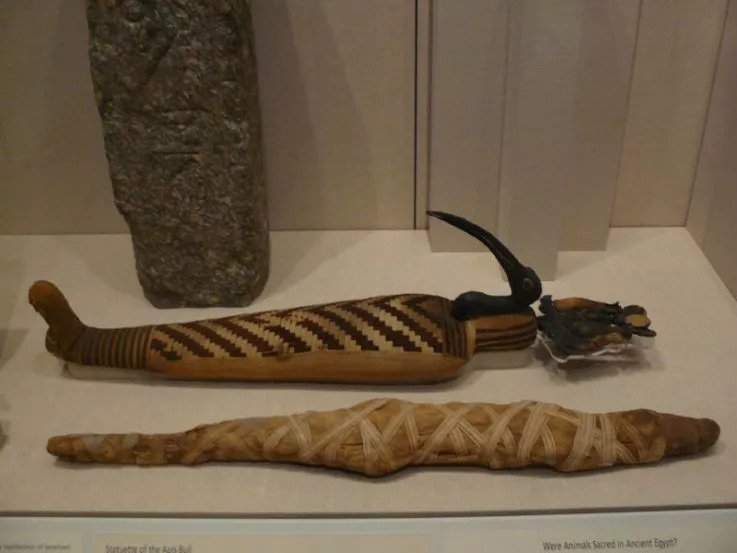Hieroglyphic Texts Discovered on Coffins Believed to Contain Mummies of Birds and Guts
Three burial shafts believed to contain mummified birds were discovered near Cairo. The coffins, which are covered in ancient hieroglyphic texts, were found in the Abusir necropolis, a large cemetery.
The discovery was made after authorities received reports of illegal excavations in the area, according to Ahram Online.
In additional to 38 carved ceramic pots, the committee discovered that the graves held four wooden coffins. Though in poor condition, hieroglyphic texts are still visible on their surfaces.

Sabri Farag, the director-general of the Saqqara Necropolis and leader of the excavation committee, said that one of the texts featured a cartouche—an oval tablet bearing text specifically associated with royalty—of King Ptolemy IV, according to Ahram Online.
King Ptolemy IV reigned from 221 B.C. to 205 B.C.
The hieroglyphs were too badly degraded for experts to decipher anything further, but additional studies are being planned to reveal more, according to Ahram Online.
Supreme Council of Antiquities secretary-general Mostafa Waziri said that an excavation committee was formed to investigate the site as quickly as possible following reports of illegal grave-digging, according to Ahram Online.
The coffins are believed to contain four mummified bodies, but not of humans—of birds. Also found in the coffins were three of the mummies’ stomachs, wrapped protectively in linen.
Removal of internal organs during the mummification process was common practice, according to the Smithsonian Institution. In addition to removing moisture from the body, embalming involves taking out anything that would rot especially quickly, like organs.
Animal mummification was also common practice in ancient Egypt. While the precise purpose of mummifying creatures like dogs, cats, and birds remains unknown, ancient Egyptians viewed animals as of equal importance to humans, according to The New York Times.
For instance, a mummified ibis—a sacred bird with a long hooked beak—would have been preserved because that bird was associated with the deity Thoth, the god of magic and wisdom, according to The New York Times.
And yet, a CT scan of one such mummy revealed “just a bundle of feathers” inside. A separate scan of a different bird mummy revealed that it really did contain a bird—which had choked to death on a mouse, according to National Geographic.
All of which is to say that these newly discovered mummies might be, quite literally, full of surprises.





